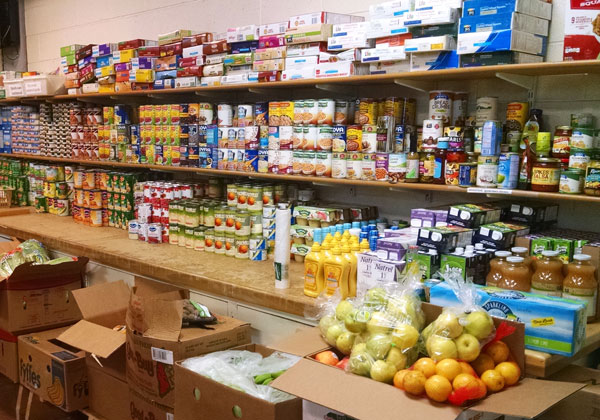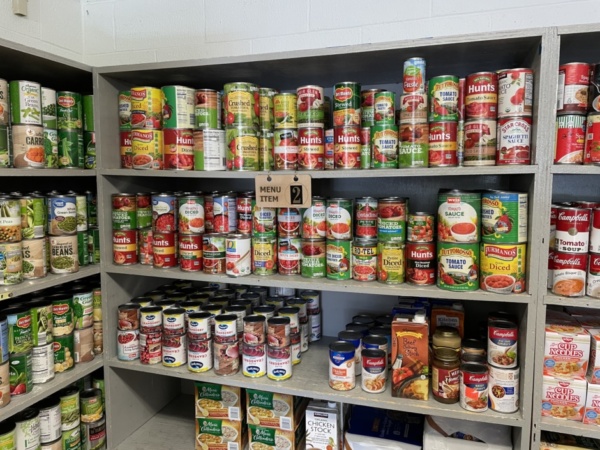Why Food Pantry Lockhart is a Crucial Source for the Community
Why Food Pantry Lockhart is a Crucial Source for the Community
Blog Article
Why Sustaining Your Neighborhood Food Cupboard Is Essential for Aiding Those in Demand
The importance of supporting regional food cupboards can not be overemphasized, especially in the context of food instability, which influences a disconcerting variety of individuals and family members within our communities. These important sources not only provide immediate relief from hunger but also add to wider societal benefits, including improved wellness and instructional results. As we discover the diverse function of food kitchens, it ends up being obvious that their impact extends much past merely distributing food (Food Pantry Lockhart). Recognizing this much deeper connection may motivate a reconsideration of exactly how we involve with and sustain these important establishments.
Comprehending Food Instability
Food insecurity impacts roughly 10.5% of households in the USA, showing a substantial public health concern that goes beyond mere hunger. It refers to the absence of consistent access to enough food for an active, healthy life. This problem can lead to a variety of damaging outcomes, including inadequate wellness, enhanced health care costs, and decreased scholastic efficiency amongst children.
The sources of food insecurity are multifaceted, commonly originating from economic elements such as underemployment, unemployment, and poverty. Geographic location can also play a crucial role, with food deserts-- areas with limited accessibility to budget friendly and nutritious food-- worsening the concern - Food Pantry Lockhart. In addition, systemic variables, consisting of social and racial injustices, add to the disproportionate influence of food insecurity on marginalized neighborhoods
Attending to food instability is not just about boosting food supply; it needs an extensive method that incorporates financial stability, education and learning, and neighborhood support. Food insecurity not just impacts individual health however additionally has wider implications for societal health and efficiency. Understanding its complexity is important for developing reliable treatments and fostering long-term services that make sure all individuals have trusted access to healthy food.
The Role of Food Pantries
Local food cupboards function as essential lifelines for people and households facing food insecurity. They provide important food products to those that might have a hard time to manage appropriate nourishment due to economic challenge, joblessness, or unpredicted scenarios. By dispersing food at no charge, these companies help relieve cravings and stop the adverse wellness effects connected with inadequate diet plans.
Food kitchens frequently companion with neighborhood farms, supermarket, and area organizations to resource a range of healthy food products, including fresh fruit and vegetables, milk, and proteins. This partnership makes certain that pantry customers receive not only nourishment but likewise much healthier choices that add to total health.
Moreover, food kitchens serve as community centers, cultivating links amongst residents and offering a sense of dignity to those in demand. Several cupboards offer extra resources, such as nutrition education and learning and recommendations to social solutions, aiding customers browse their obstacles extra efficiently.
In significance, food cupboards play a complex function in combating food insecurity. They not only address instant hunger but additionally encourage family members and individuals to improve their conditions, thereby advertising area strength and cohesion.

Advantages of Sustaining Food Pantries

Sustaining food kitchens why not try here not just nourishes those in requirement however additionally reinforces the material of the neighborhood. By giving important food sources, food pantries reduce cravings and minimize food insecurity, which is important for the health and wellness and well-being of individuals and households. Accessibility to healthy food adds to boosted physical wellness, far better educational end results for kids, and boosted mental wellness, therefore cultivating a more efficient and engaged area.
Additionally, supporting food cupboards advertises social cohesion. These organizations work as centers for neighborhood engagement, combining volunteers, benefactors, and recipients in a common objective to combat cravings. This partnership can damage down barriers, foster understanding, and construct connections amongst varied community members.
Additionally, donations to food kitchens, whether in the kind of food, funds, or time, stimulate the regional economic climate. Many food pantries focus on sourcing from regional manufacturers, thus sustaining local farming and businesses. This develops a cycle of assistance that benefits not only those in demand but the community as a whole.
How to Get Included
Engagement with food kitchens can take many types, enabling teams and people to make a significant influence in their neighborhoods. Monetary contributions are also invaluable, as they allow food kitchens to purchase fresh fruit and vegetables and vital materials.
Volunteering your time is an additional impactful method to sustain local food kitchens (Food Pantry Lockhart). In enhancement, think about arranging food drives within more helpful hints your office, community, or school team to elevate recognition and gather resources.
Partnerships with local organizations can further boost assistance for food pantries. Organizations can hold contribution occasions or contribute a part of their sales to the kitchen. Finally, getting the word out via social media and personal networks assists to raise visibility and encourage others to contribute. By taking these actions, teams and individuals can substantially reinforce the efforts of local food cupboards and help those in need.
Neighborhood Influence and Link
Acknowledging the profound influence of food pantries on neighborhood well-being is important for promoting a spirit of link and cooperation. Food cupboards serve not just as vital sources for those facing food instability but additionally as hubs for area interaction. They bring together varied groups-- customers, volunteers, and donors-- developing an atmosphere where people can sustain and connect each other.
The influence of food cupboards extends past simple stipulation of food; they act as a driver for social communication. By taking part in cupboard efforts, neighborhood participants can develop partnerships that go beyond socioeconomic obstacles. This network of assistance aids to dismantle the preconception typically related to food aid, cultivating an ambience of approval and understanding.
As people unify in their initiatives to sustain neighborhood food cupboards, they cultivate a feeling of common objective and duty, enhancing the concept that everyone has a role to play in making certain that no one goes hungry. Inevitably, sustaining food cupboards strengthens the material of the neighborhood as a whole.
Final Thought
Sustaining neighborhood food kitchens is important in combating food insecurity and boosting the wellness of susceptible populations. Engagement with food cupboards cultivates community links, promoting social cohesion and equity.

Report this page